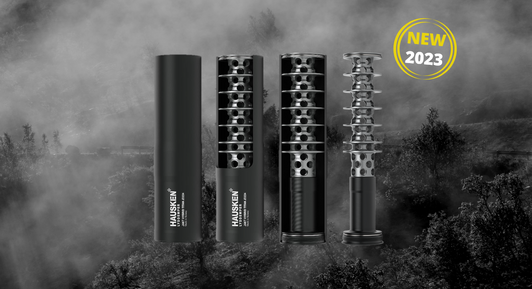EXPERIENCE
THE BEAUTY
Clear eyesight is vital for hunting and sport shooting, allowing precise target acquisition and enhancing safety. Protection is necessary to guarantee long-term health and prevent impairment.

The eye adjusts
Clear starry sky, full moon - the best conditions for a hunting rendezvous with nature, far away from the glaring lights of the city.
The air is fresh, the sounds of the woods at night are wonderfully familiar. At first, it is quite literally hard to see your hand in front of your eyes. But the eye soon adjusts to the darkness. Now just climb the rungs and then enjoy the magic of the hunting grounds at night as the contours of nature become ever clearer.

The human eye is a miracle of adaptability. The ability to adjust to varying light conditions (light-dark adaptation) takes place in two ways ...
... firstly due to the pupillary reflex. This means that the width of the pupil changes, depending on the amount of ambient light. It narrows if the eye is exposed to a lot of light and widens when it gets darker.
... secondly by means of the photo-receptors, aka light receptors, in the retina of the eye: the cones and rods. The cones work mainly in daylight. They are specialised in perceiving colours and make the world seem vivid. The rods take over when twilight descends. They are night vision experts and can distinguish between even the slightest gradations in brightness, although they are unable to reproduce colour. That’s why all cats look grey at night.
Protecting the eyes with silencers
When hunting in the dark, if light suddenly catches the eye, as is the case with muzzle flare or muzzle flash, the pupil instinctively contracts and the hunter's vision is momentarily impaired. Like the aperture over a camera lens, the eye will attempt to adjust the pupil width to the unexpected light conditions to ensure that the image remains ideally exposed. At the same time, the eye switches from the rods to the cones to form the image. The hunter will lose their optimised night vision capability, as the sluggish system needs up to 30 minutes to move completely back to the more light-sensitive cones. So it fair to say that a muzzle flash will significantly impair vision for the first few minutes after a shot.
This is where silencers step in. Its main function is, of course, to reduce the noise level of the shot to a level that is harmless to the hearing. In addition, the silencer offers other advantages, such as drastically reducing muzzle flash. Depending on the type/size of the model and calibre/barrel length of the weapon, a silencer can even "swallow" the muzzle flash completely.
The advantage for the hunter is that the eyes are less affected by the reduced muzzle flash. In addition, game that is to the side or behind the shooter is less frightened by disturbing flash and shot effects.
A silencer can therefore contribute to the well-being of everyone involved in a hunt – protecting their hearing as well as their vision.








